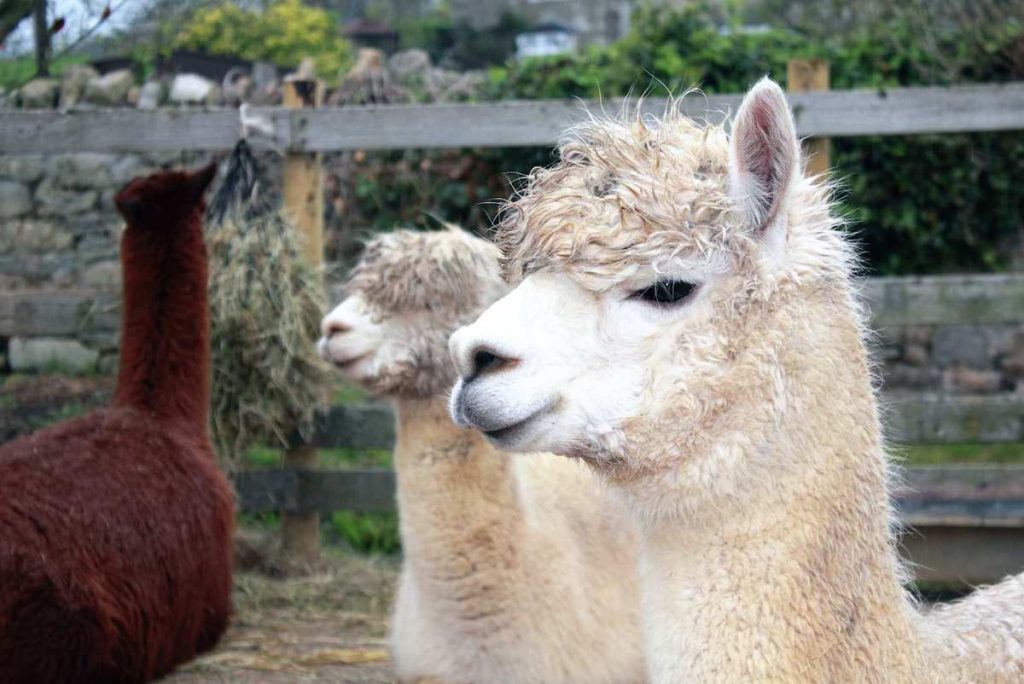As a scientific researcher, you’ve invested a lot of time and effort into your research. But even after you get published, there’s no guarantee people will read you and cite you.
That’s where scientific press releases, like those on EurekAlert!, are like loudspeakers for your science. Global announcements in language that the media and other lay readers can understand. But are you a journalist? Can you write in an engaging tone rather than a scientific tone?
Press releases require scientific know-how with copywriting skills. A few writers can do this well, and they produce effective press releases that people red. Do you know where to find them?
Guess what – you’re in the right place, the write place. 😉 Read about Scize press release services here. And read on to learn how to write a press release.
- Why press releases are valuable for researchers
- Practical tips for writing press releases
- Why a professional press release writer is worth 500% the price (or much more)
- Examples of good scientific press releases
- The solution is right in front of you
Why press releases are valuable for researchers
Research has shown that most scientific publications have limited reach, with up to 50% receiving fewer than 10 citations. Most scientific publications will never be cited; if they are, it’s a slow, cumulative process.
Researchers also often lack the expertise, resources, or time to market their work effectively. Publish or perish. They’re usually well into their next one, two, or more publications by the time they finally get published. Who’s got time to market something they worked on a year ago?
Do you deal with this problem? How are you marketing your research? Blogs and social media are certainly one good way, as is participating in science-based forums like ResearchGate. Open access can also increase exposure. Yet they’re all sort of a crapshoot – a gamble.
This is where press releases can help.
By summarizing your research concisely and engagingly, press releases make your work more accessible to the media and the public. So how do you write them?
You can simply avoid the stress and hire Scize to do it for you (read about our PR service here and contact us here). But it’s still good to know what goes into them. And if you love to write, you may really enjoy it.
Practical tips for writing press releases
Have you read this article so far? You probably found it quite easy to read. That’s because it’s written in a tone that anyone with a basic education and intermediate-level English can follow. That’s the tone you need in a press release.
Make it readable and shareable
Tone matters. Readability matters. This means using “plain” language instead of complex terms. It means trying to write like you talk, not write like you do in a manuscript. It’s not easy. But you can do it with practice. And that’s the first tip: write conversationally and for readability.
Keep the language simple, avoid technical jargon and acronyms, and include quotes from the authors to provide context and add a human touch.
Grab the reader’s attention
According to a study by the Pew Research Center, over 50% of Americans have medium or low science knowledge. Even though your research may be groundbreaking, it may not be accessible to a lay audience. But that audience could very well be the media, who are the gatekeepers to your work being shown to a very large regional or global audience.
Did we get your attention? Good; that was the aim. That’s what your press release should do, too.
To write effective scientific press releases, start with a clear and attention-grabbing headline that, ideally, highlights the main finding while incorporating a little wordplay or a “hook”. Think of the articles you click on within your social media feed. Or the articles you read in a newspaper or magazine. Why do you read them? What grabs you?
Here’s a selection of headlines we’ve written (click the links to read the whole article).
- Researchers in Japan make android child’s face strikingly more expressive
- Brainwave activity reveals potential biomarker for autism in children
- Multi-hop Communication: Frog Choruses Inspire Wireless Sensor Networks
- China’s special economic zones found to reap billions of dollars in net benefits
- Experience of caring for a loved one linked to valuable end-of-life discussions
Two words on humor
Be careful.
Humor is great for dealing with something positive or neutral, like a new scientific technique, a curious finding on a certain population, or a surprise finding. But if you have topics such as illness, violence, or anything negative, that’s usually not the time for a clever pun. For example, we wrote this one on palliative care and hospices. This was no time for humor. It’s a somber work. The headline was conservative and sufficient.
Use visuals
Use data visualization tools like infographics or charts to make your findings more accessible. It’s best to not use figures and tables from your scientific manuscript in press releases because they’re often too technical and complex for the general public to understand.
Infographics
Infographics are a visual way to display complex data or information. They can be used to simplify complex data and present it in an engaging and easy-to-understand way. You might also use your graphical abstract, which is similar to an infographic.
Photographs
Photos can showcase research equipment, scientific samples, and you, the author. They can also be used to capture the research process, such as scientists conducting experiments in a lab or the field.
Charts and graphs
Charts and graphs can be used to show data and results in a visually appealing way. They can compare data sets, show trends over time, or demonstrate statistical significance. But limit these, as many lay readers are immediately turned off by things that look too complex.
Video
Some publications accept video. This may be a video from your study if it’s something people can understand and if it’s not graphically disturbing. Ideally, this is a video lay summary of your work. Video is highly accessible and shareable (can you say Tik Tok? YouTube?). Use it if you can. Highly recommended though we at Scize don’t prepare videos yet. We may offer this in the future.
Press releases are meant to communicate research findings in a way that’s accessible and engaging to a broad audience. Your manuscript is how you communicate with your scientific field. A press release is how you communicate with the world. Keep that in mind when you choose your visuals.
Keep it concise
Your press release should be no longer than one page, ideally no more than 500 words. EurekAlert! recommends around 400 words, but we’ve had trouble with that when studies have multiple findings or many variables. Over 500, however, defeats the purpose of a press release, which should be short and sharp.
Use short paragraphs, bullet points, and subheadings to make your release easy to skim.
Why a professional press release writer is worth 500% the price (or much more)
While it’s possible to write your own press release, hiring a professional writer can increase the chances of your work being noticed by the media and other scientists. Imagine the New York Times or the BBC picking up your story. It’s not that hard to do if you have good science presented attractively. What’s the exposure worth?
- Citations
- Funding
- PR for your institution
- Name recognition for you and your team
- More publication opportunities
Those are for starters. Is it worth fussing over a few hundred dollars of budget when one good lead could gain you tens of thousands of dollars in funding?

A trained and experienced science writer can present your research in an engaging and informative way that resonates with journalists and the public.
Press release writers will also be familiar with different media outlets’ specific (and sometimes weird!) requirements. For example, EurekAlert! now has hundreds of keywords to choose from and lets you enter your Twitter posts. A PR writer will know this and provide them in the right tone and within the word or character limits.
Researchers seldom have time to worry about these things. And if they do, it’s not always their strength. Can a researcher write their own press release? Absolutely! But can they do it well, and do they have the time for it? Would their time be better spent elsewhere? Well, up to you – but contact us if you want to hire a pro writer.
Examples of good scientific press releases
Many press releases go out every day. The media constantly looks for science news to write about, and they read these releases. The ones that attract readers usually have at least one of the following:
- Impressive science
- A catchy headline and hook
- Something novel, interesting, fresh, exciting, shareable
PR example 1: Triple-negative breast cancer therapy
This one is a case of impressive science and simply getting the word out sufficiently.
In 2020, a press release titled “New therapy for triple negative breast cancer” was published on EurekAlert! This was a Spanish study and, in fact, it doesn’t follow all the tips given above.
The headline is, well, boring. But any new treatment in this area is a hot enough topic for people to click on it.
The story doesn’t have a proper lede and uses a lot of specialized terminology.
Honestly, it’s not very readable other than having short paragraphs.
BUT it does two things right:
- It delivers all the key information and credits it to the researchers.
- It exists! The authors went to the trouble of getting a press release because they wanted more exposure and felt their work was newsworthy.
The press release summarized a study that identified a new treatment for triple-negative breast cancer, a type of cancer often resistant to traditional treatments.
The press release was picked up by media outlets, including Medical News Today, Science Daily, and Cancer Research UK, resulting in widespread coverage and recognition of the research.
In this case, the science “sold” itself.
Simply putting out the press release was enough to gain momentum, which led to impact.
PR example 2: Llama nanobodies
The press release titled “Llama ‘nanobodies’ could hold the key to preventing deadly post-transplant infection” and released on EurekAlert! was a more niche topic. It had the challenge of explaining a molecular immunology discovery. This could be very technical and inaccessible, but the writer picked up on the quirky aspects of llamas and an intriguing term in “nanobodies.”

The press release had a catchy and memorable title that piqued people’s interest without being too clever. It addressed an important and unusual topic: using llama “nanobodies” to prevent deadly post-transplant infections. The press release provided a clear and concise summary of the study’s findings, which showed that the llama nanobodies were effective in preventing infections caused by a common post-transplant pathogen. It explained difficult terms and didn’t get carried away with the llama aspect of it.
The llamas were a hook that brought in readers who probably would not have understood the science discussed in the paper. It made the concept accessible enough without “dumbing it down.”
Major news outlets, including BBC News, CNN, NBC News, and Forbes, picked up this press release. The outlets reported on the study’s findings and had a little fun with the llama aspect of it. The title likely lured them in, and the content was accessible enough for a general science journalist to communicate it to a wider audience.
All that was missing was a llama picture. Who doesn’t like llamas?
But don’t worry; you don’t need to discover novel cancer therapies or work with charming animals to make your science attractive. If your study’s been published, the journal and the peer reviewers know it answers the big “so what?” question. Your science matters.
In other words, every study has something to communicate. How you communicate it will help it get noticed, publicized, and eventually cited. A good science writer can do that for you.
So, where do you find one of the “good” science writers?
The solution is right in front of you
Scize writes press releases that people read and share. We understand, write, and communicate… so you can focus on other things.
As a researcher, your work deserves to be recognized and celebrated.
Scientific press releases can increase your visibility, reach a wider audience, and potentially increase citations and funding opportunities. Or you can publish and not get read, like so many articles.
Scize has a track record of widely covered stories resulting from press releases we’ve written. We’re not cheap, but we’re worth it, for you. And we do offer institutional discounts. Find out how we can get your science out into the world. Start today.

